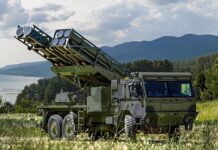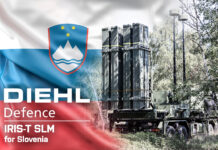The relative simplicity and effectiveness of explosively-formed penetrators (EFPs) against various types of armoured targets, has led to their use and delivery from a variety of weapon systems for more than a century. In Ukraine, top-attack EFPs, including from artillery and air-dropped systems, have been increasingly effective on both sides in defeating the relatively thin roof armour of even the most advanced armoured vehicles.
EFP threats to battlefield armour have been around for very many years and during several different conflicts, largely delivered from ground-based systems. Today, light and armoured vehicles up to main battle tanks (MBTs) continue to be at risk from ground-based EFP weapon systems, whether from landmines, improvised explosive devices (IEDs), anti-tank guided weapons (ATGW) or other means. The ongoing war in Ukraine is no exception, where such threats are numerous. One example in use with the Ukrainian Armed Forces is the French-made HPD-2 anti-vehicle mine, which functions using a mutual inductance sensor, with its warhead delivering an EFP slug directly upwards, capable of penetrating 150 mm of underbelly armour of target vehicles from its emplaced position below.
However, the growing danger of top-attack EFPs against the relatively thin roof armour of even the most heavily armoured platforms is changing battlefield dynamics. Guided artillery rounds, for example, as well as air-dropped systems carrying EFP-based submunitions, were widely used in the Middle East during the War on Terror by US and Allied Forces. In Ukraine, however, they have been even more intensively used, this time in a peer-to-peer setting, with several such systems taking a toll on both sides and underpinning the frightening top-armour-defeating capabilities of EFPs.
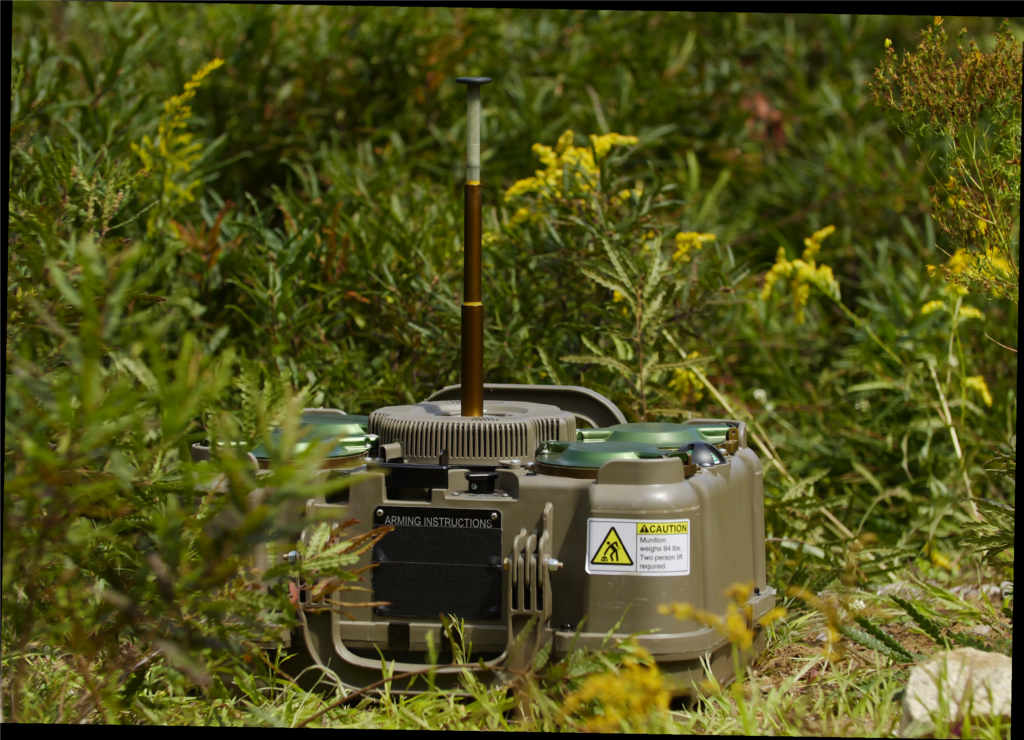
EFPs simplified
In relatively simple terms, no matter the method or weapon platform from which an EFP is delivered, this warhead is a type of shaped charge designed for use against lightly armoured vehicles, or areas of thinnest armour and other weak spots on a more heavily armoured platform, such as an MBT. Sometimes also referred to as a Misnay–Schardin effect warhead, an EFP consists of a casing containing a high-explosive (HE) filler, a detonator, and a metallic liner, often made of Copper, although other metals, including Tantalum, are also used. This liner forms the penetrator and in the case of an EFP, it differs from a HEAT charge, because its liner is often thicker; rather than a typical conical, hemispherical, or parabolic form, the liner takes the shape of a shallow dish, or bowl. These characteristics result in its collapse into a fast-moving, slug-shaped projectile, which forms within some 200-400 µs of detonation of the HE filler. It is worth noting that variations in liner shape and material, for instance, Copper, Tantalum (today’s preferred liner material), Iron, Molybdenum, and Tantalum-Tungsten alloys, as well as liner thickness, together with the explosive used and detonation points, will determine the behaviour and overall performance of the final EFP slug.
That said, whatever its parameters, in comparison with the hypervelocity jet created by a typical HEAT charge’s conical liner (which is designed to perform optimally only over fairly short stand-off distances, and tends to break apart travelling over greater distances), EFPs are less penetrative, though the fast-moving EFP slug will retain its form and penetrative power over much greater stand-off distances to deliver sufficient punch to defeat its targets. In the case of top attack, that means defeating the thinner roof armour of MBTs and other AFVs. Indeed, thinner roof armour of only several tens of millimetres thickness means an EFP simply does not need the penetrative power of a HEAT jet, since it is not trying to defeat the several hundred millimetres of frontal armour of a typical tank. What it can do, however, is deliver potentially better post-penetration effects to a target than a HEAT jet, over greater stand-off ranges.
Thin on top – vulnerabilities to exploit
As to why AFV roof armour is so thin in the first place, this comes down to weight-saving and design reasons; not every part of an armoured vehicle or MBT can be as heavily protected as the front-facing parts of the hull and turret – those most likely to take a hit from ground-based weapons in battle, with attack from above seen as less likely in the past compared with ground threats. As a result, the top or roof armour of MBTs and other AFVs have typically been accepted as some of the thinnest on the vehicle. Indeed, these areas may even lack sufficient thickness to protect a vehicle from small HEAT bomblets, which are typically able to penetrate some 2–5 cm of rolled homogeneous armour (RHA). Multiple manufacturers have offers roof armour packages to remedy this vulnerability. To put things into perspective, the roof armour of a typical M1 Abrams, for example, is estimated to be around 25.5 mm thick; by way of comparison, the turret cheek armour of newer M1 Abrams variants is estimated to be as thick as 700-980 mm. The discrepancy between these two measurements, should clearly illustrate why new EFP-based top-attack systems are proliferating.
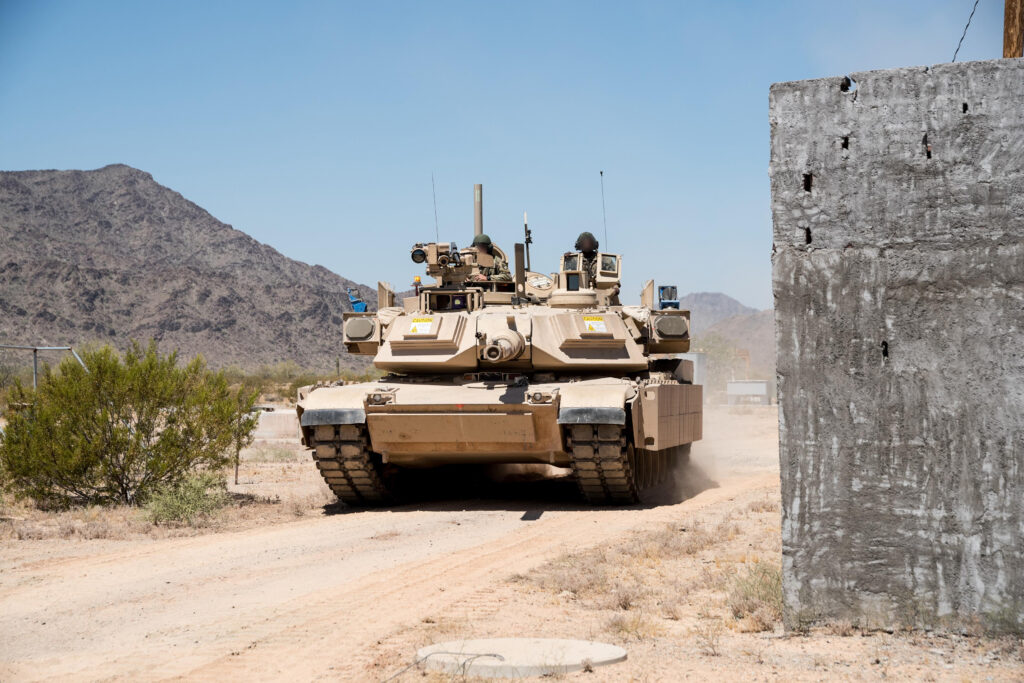
Threats above the Donbas
Before looking at some of the Allied systems being used in the war in Ukraine, one Russian EFP top-attack threat on the battlefields comes from their SPBE (self-guided combat submunition), which is typically air delivered, although it can also be delivered on target using rocket-artillery. This system is similar to the US Sense and Destroy Armour (SADARM) submunitions used in the CBU-105 half-tonne cluster bomb, which carries 40 submunitions. The parachute-retarded, sensor-fuzed, anti-vehicle SPBE system employs an EFP warhead for top-attack purposes. When dropped from aircraft, the SPBE is delivered from the RBK-500 SPBE cluster bomb, which contains 15 of the submunitions, released once the carrier munition’s mechanically-timed fuze initiates a pyrotechnic ejection charge. During its descent, the weapon is slowed by three small parachutes to optimise target-detection time in the air, while the submunition’s dual-mode IR/mmWave sensor scans for vehicle targets below. Once the target is detected and in range, the SPBE’s warhead is detonated, and its EFP is able to penetrate up to 70 mm of armour at a 100 m stand-off range. If no target is detected during that time and the submunition reaches the ground without the EFP initiating, the munition will behave as an anti-vehicle landmine, its sensors similarly responsive in such a ground-based mode. Newsreel footage during the early months of the war in Ukraine caught the mid-air terminal flight phase detonation of such carrier systems and the release of many submunitions above the car park of a residential apartment block. The submunitions, possibly SPBEs, detonated some tens of metres above the ground, and indiscriminately destroyed most, if not all, of the parked cars, including what looked like multiple strikes on many.
Gunners’ preference
When it comes to Allied-supplied systems in the current War in Ukraine, already mentioned are the Bofors Nutating Shell (BONUS) 155 mm guided cluster round and Diehl Defence’s SMArt 155 mm guided artillery round, which deliver top-attack EFP submunitions. Both are highly prized – when available – by Ukrainian gunners, due largely to their high-hit probabilities. Space precludes going into detail about each, but as these systems share many similarities, we ’ll examine one, BONUS, in more detail.
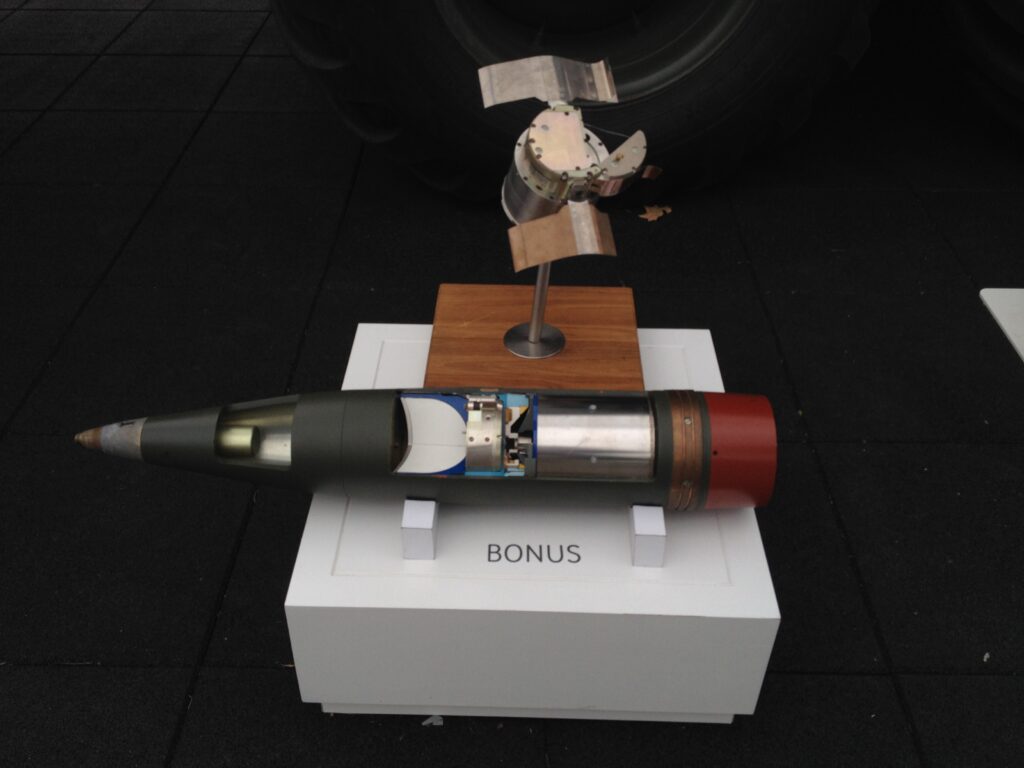
The BONUS round itself, according to its makers, has a dual-mode, multi-band IR and LiDAR (laser radar) sensor, which enables a hit probability of one target per shell. The round is effective out to ranges as far as 35 km, when relying on a base-bleed carrier shell, as long as it is fired from a NATO standard L52-calibre gun. The round’s electronically timed fuze, set by the gun crew before firing, initiates the ejection charge to release two EFP submunitions from the carrier shell at a predetermined altitude between 800 m and 2,200 m above the battlefield, using firing data from the command post, based on targeting information and target description from the forward observer or spotting drone team. Once ejected, the two EFP sensor-fuzed submunitions then search for their own targets, each with a search diameter footprint of 200 m, and both capable of covering up to a possible 32,000 m2 in total, between them, depending on the altitude from which they are released. Each EFP submunition has a descent velocity of 45 m/s, slowed by short winglets, and a spin rate of 15 rps. Once a target is chosen by a submunition, the EFP warhead is fired down into the top armour of the vehicle, the slug achieving speeds in excess of 2,000 m/s and capable of penetrating between 100 mm and 140 mm of rolled homogenous armour equivalent (RHAe); the maker claims the munition is effective against both passive and reactive armour.
Hand-emplaced, top-attack munition
Beyond Ukraine, US defence company, Textron, put out a paper in October 2024, titled ‘Terrain Shaping in Modern Warfare’, which discusses the tactics of controlling enemy movement and establishing defensive postures using, amongst other things, systems delivering top-attack EFPs. The paper is very obviously written in support of the emergence of the company’s new XM204 (and XM250) top-attack, anti-vehicle munition systems – the XM204 having been on display at AUSA 2023/24 and Eurosatory 2024.
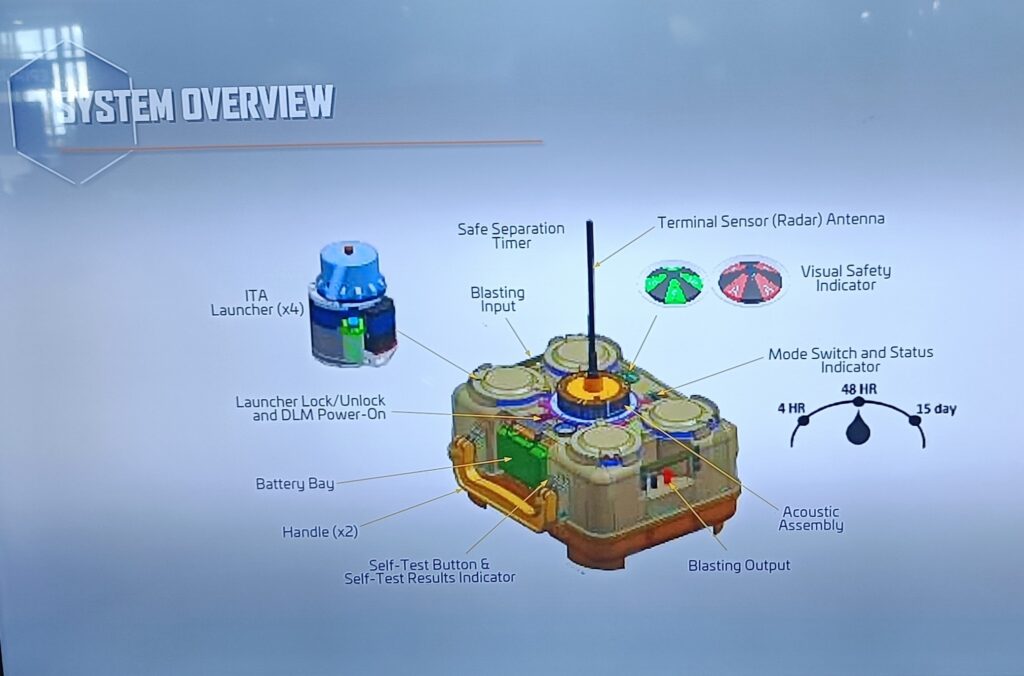
Final thoughts – protection against top-attack EFPs?
Limited space again precludes detailed discussion here about technical or operational ways, which might mitigate against top-attack EFPs. Suffice it to say though, that armoured vehicles are currently not really built to withstand this threat. There don’t even appear to be easy solutions on the horizon anytime soon. It would seem unfeasible to up-armour vehicle upper hemispheres to match the threat, and existing active protection systems (APSs) were not designed with the top-attack EFP threat in mind. EFPs are able to initiate at a distance of roughly 50-100 m from the target, far out of range of known APSs’ engagement ranges. Additionally, even for static forms of APS, the EFP slug is a very small projectile moving extremely fast, making it very difficult to react in time to intercept it, especially at the aforementioned short distances. On top of this, targeting top-attack EFPs would require the APS to be able to engage targets at near-vertical angles, which most APSs cannot do. By contrast, HEAT warheads are simpler to intercept, since the missile, shell, or drone carrying the warhead tend to be larger, and relatively slower-moving targets (compared to EFP slugs), and tend to approach the target at horizontal or shallow dive trajectories. Consequently, they represent a much simpler prospect for the APS to intercept.
As such, perhaps the most practical answer to such threats currently lies in very short-range air defence (VSHORAD) systems, particularly those suited for dealing with the counter-unmanned aerial vehicle (C-UAV) and/or counter-rocket, artillery and mortar (C-RAM) target sets. With demand for such systems already high due to the threat of small drones, the proliferation of top-attack EFPs will likely only increase their value to armed forces even further.
Tim Guest


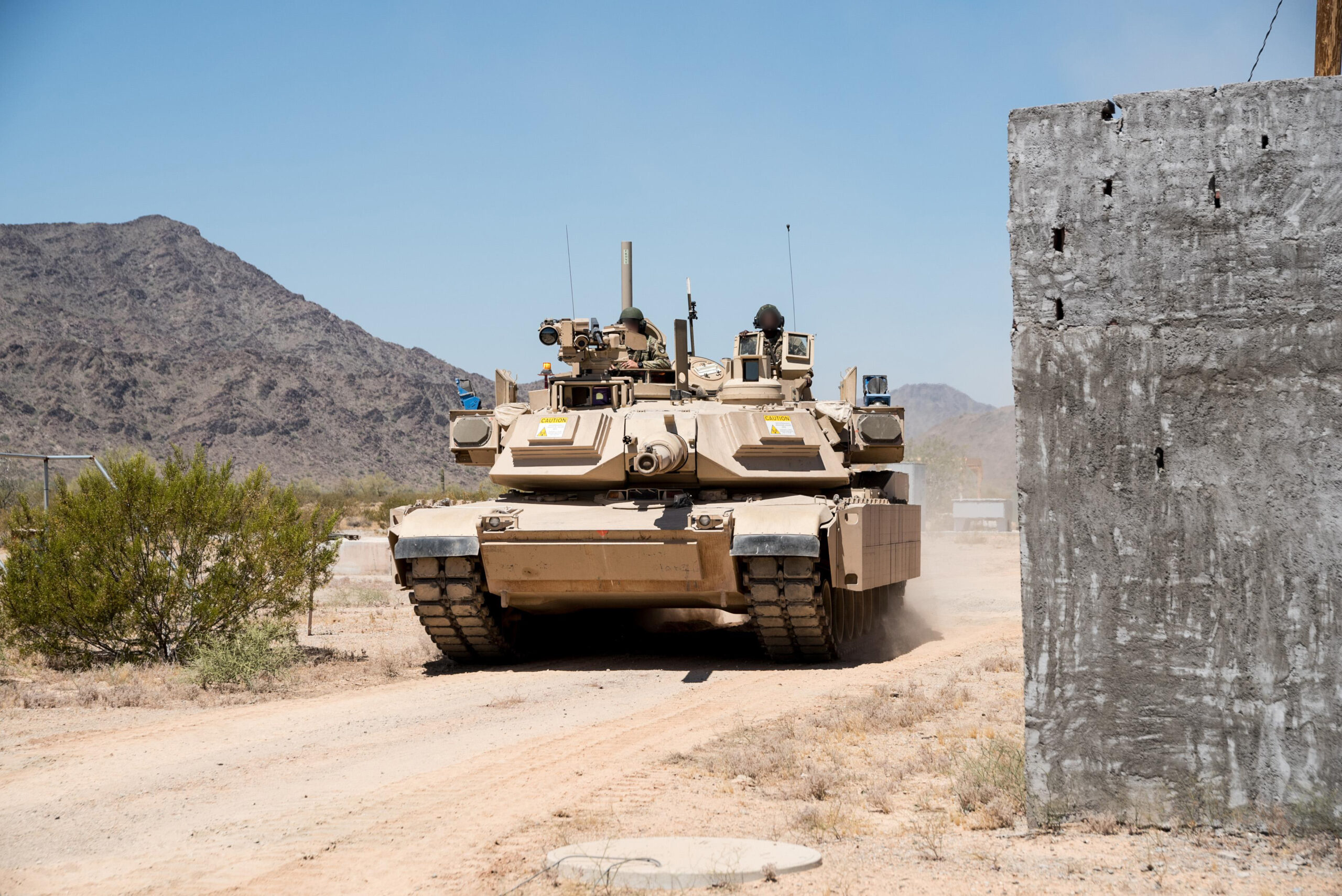



![Desolate skies: Why GBAD matters IRIS-T SLM key system components viewed from above, consisting of the command post (left), transporter, erector, launcher (TEL; middle), and radar (right). This system forms the MRAD component of ESSI. [Diehl Defence]](https://euro-sd.com/wp-content/uploads/2025/08/IRIS-T-SLM-system-components_Diehl-Defence-Kopie-218x150.jpg)

